
Volkswagen ID. Aero Will Break Cover In Concept Form On June 27
- Jun 24, 2022
- Views : 1128

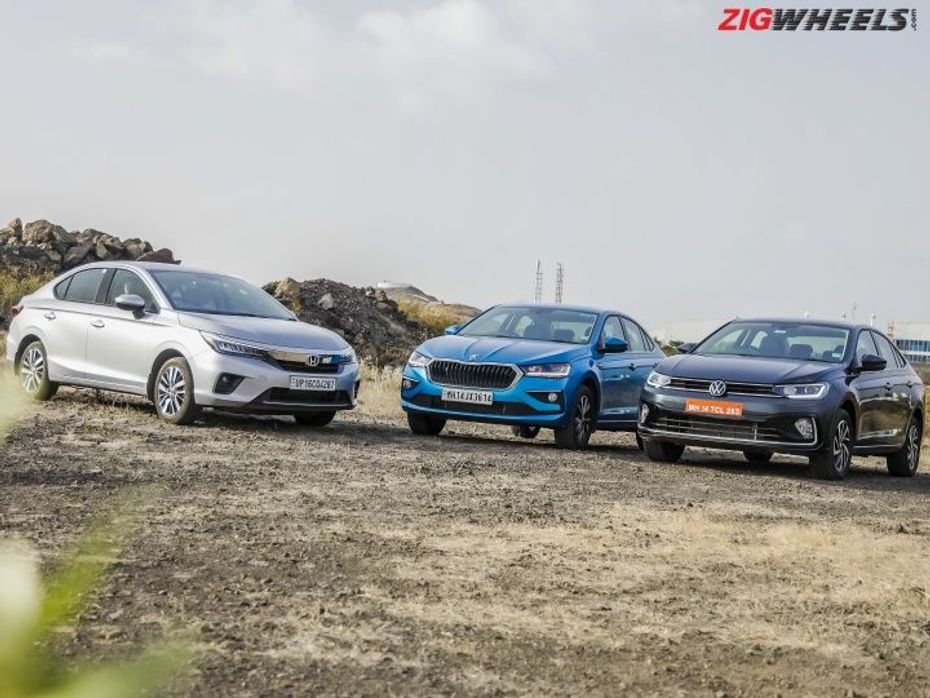
Last time we pitted the Honda City against the Skoda Slavia, it was certainly intense, even bringing out some fireworks between Honda and Skoda fanboys. Honestly, that was just the appetizer as the two compact sedans are back in the ring again now, but this time there’s a new player joining the fray in the form of the Volkswagen Virtus.
Another thing that’s different now is we’ve got both the Virtus and the Slavia in their 1.5-litre TSI DCT combos and due to popular demand, we’ve got the City in the 6-speed manual gearbox setup. Three sedans, and all of them specced with a 1.5-litre motor. Sure, the Slavia and Virtus are essentially the same under the hood, but do they really ride and handle the same? And will the Honda Sedan live up to its fans' expectations? We decided to pitch these three sedans against each with a bit of the good old Zig spice in four key aspects: Acceleration, Braking, Cornering & Ride And Handling.
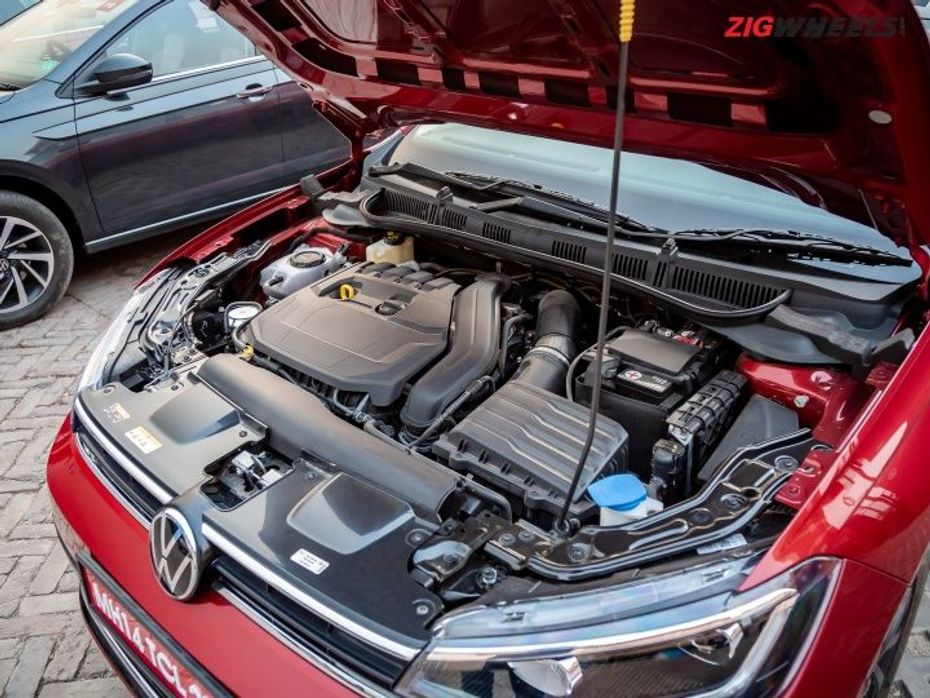
|
Honda City |
Skoda Slavia |
Volkswagen Virtus |
|
|
Engine |
1.5-litre naturally aspirated |
1.5-litre TSI |
1.5-litre TSI |
|
Power (PS) |
121PS |
150PS |
150PS |
|
Torque (Nm) |
145Nm |
250Nm |
250Nm |
|
Transmission |
6-speed manual |
7-speed DSG |
7-speed DSG |
Before we get into the nitty gritty of our comparison, let’s take a look at what the three sedans are like on paper. Not much needs to be said on the Skoda Slavia and Volkswagen Virtus, but it’s clear that they hold an advantage over the Honda City. Of course on-paper figures mean one thing, and how they fare in the real world are another story. So first let’s get down to how they are in a drag race:
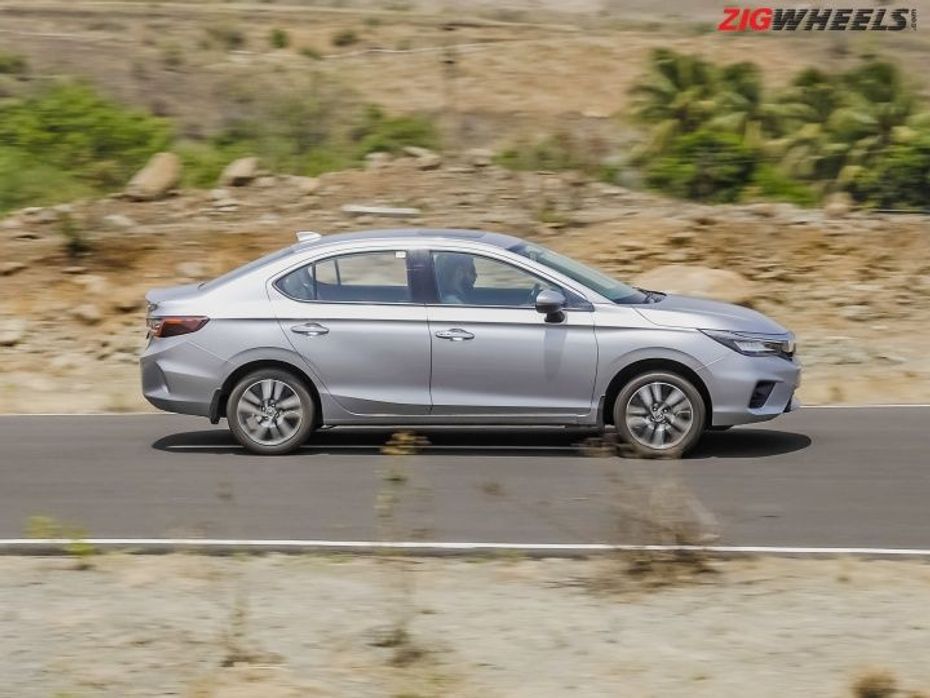
Now here’s where things will get unfair for the Honda City, which has got a big power deficit from that naturally aspirated 1.5-litre motor compared to turbopower in the German cars . Besides you will remember last time, the City in its CVT combination couldn’t beat the Slavia 1-lite TSI automatic. But what of the near-identical matched Slavia and Virtus? Could Volkswagen open the competition with a win? We’ve compiled a detailed comparison of how each sedan fared with every combo:
|
Automatics Acceleration |
|||||
|
Specifications |
Honda City |
Skoda Slavia |
Volkswagen Virtus |
||
|
Engine Capacity |
1.5-litre Petrol CVT |
1.0-litre Petrol AT |
1.5-litre Petrol DSG |
1.0-litre Petrol AT |
1.5-litre Petrol DSG |
|
0-100kmph |
12.74 seconds |
11.02 seconds |
9.32 seconds |
11.04 seconds |
9.03 seconds |
|
20-80kmph |
7.25 seconds |
6.66 seconds |
5.33 seconds |
6.37 seconds |
5,37 seconds |
|
Manual Acceleration |
|||||
|
Specifications |
Honda City |
Skoda Slavia |
Volkswagen Virtus |
||
|
Engine Capacity |
1.5-litre Petrol MT |
1.0-litre Petrol MT |
1.5-litre Petrol MT |
1.0-litre Petrol MT |
1.5-litre Petrol MT |
|
0-100kmph |
10.99 seconds |
NA |
9.00 seconds |
NA |
NA |
|
30 - 70 kmph In 3rd Gear |
9.96 seconds |
NA |
6.69 seconds |
NA |
NA |
|
40 - 100 kmph In 4th Gear |
17.10 seconds |
NA |
12.34 seconds |
NA |
NA |
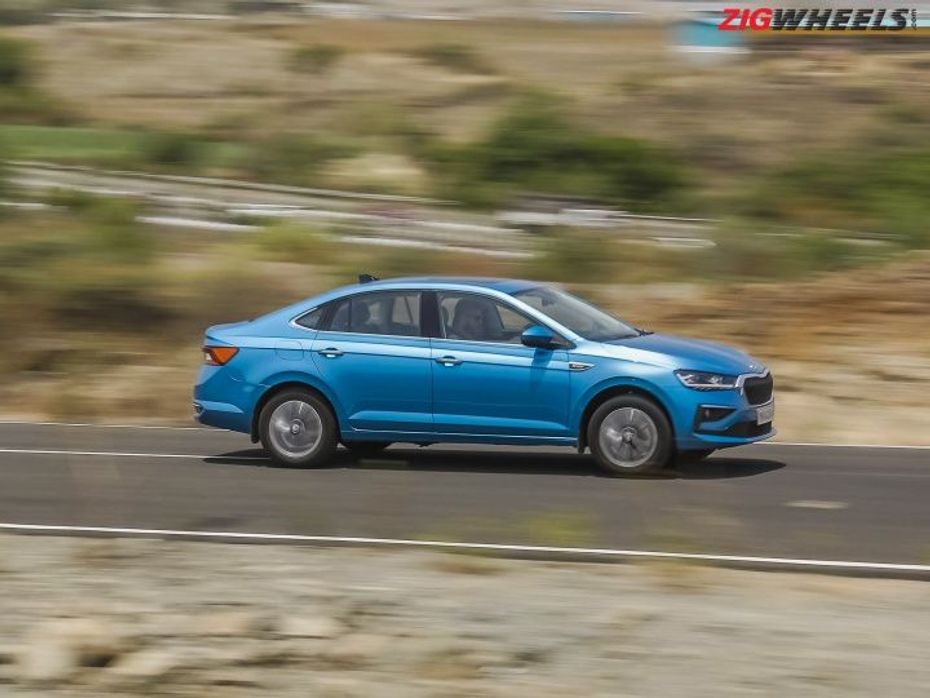
Short answer, no. The Honda City as expected falls back behind the other two cars. But it's quite a close affair between the Skoda Slavia and the Volkswagen Virtus. By the smallest of margins the Slavia snatches a win.
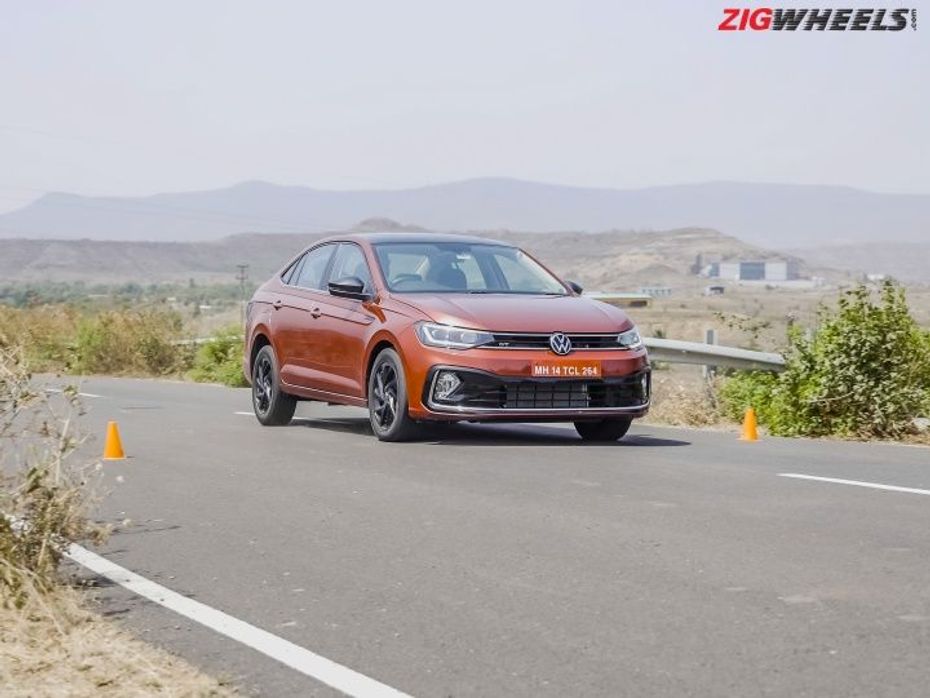
|
Automatic Braking |
|||||
|
Specifications |
Honda City |
Skoda Slavia |
Volkswagen Virtus |
||
|
Engine Capacity |
1.5-litre Petrol CVT |
1.0-litre Petrol AT |
1.5-litre Petrol DSG |
1.0-litre Petrol AT |
1.5-litre Petrol DSG |
|
100-0kmph |
44.66 meters (Wet) |
39.40 meters |
40.05 seconds |
40.95 meters |
40.66 meters |
|
80-0kmph |
28.00 meters (Wet) |
24.49 meters |
24.79 meters |
25.55 meters |
25.07 meters |
|
Manual Braking |
|||||
|
Specifications |
Honda City |
Skoda Slavia |
Volkswagen Virtus |
||
|
Engine Capacity |
1.5-litre Petrol MT |
1.0-litre Petrol MT |
1.5-litre Petrol MT |
1.0-litre Petrol MT |
1.5-litre Petrol MT |
|
100-0kmph |
43.12 meters |
NA |
40.46 meters |
NA |
NA |
|
80-0kmph |
27.19 meters |
NA |
24.98 meters |
NA |
NA |
In simple words, the car that takes the shortest distance to come to a standstill from 100kmph and 80kmph gets the chicken dinner. Here, it's the Skoda Slavia winning again, followed closely by the VW Virtus. The Honda City again comes up short in this department.
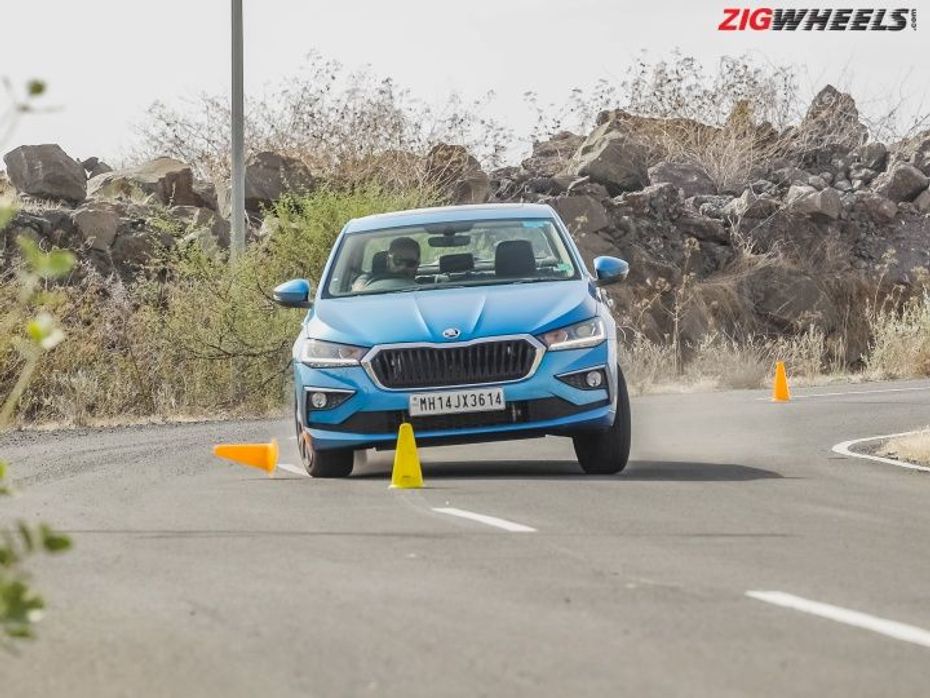
In Zig fashion, we got the cones out towards the outside of our test corner, with the three sedans tackling it at different speeds to see which one fares the best, hitting the most minimal of cones in the process. All three sedans found the 65kmph run a breeze, so we took things up a notch, to 70kmph, yielding some interesting results.
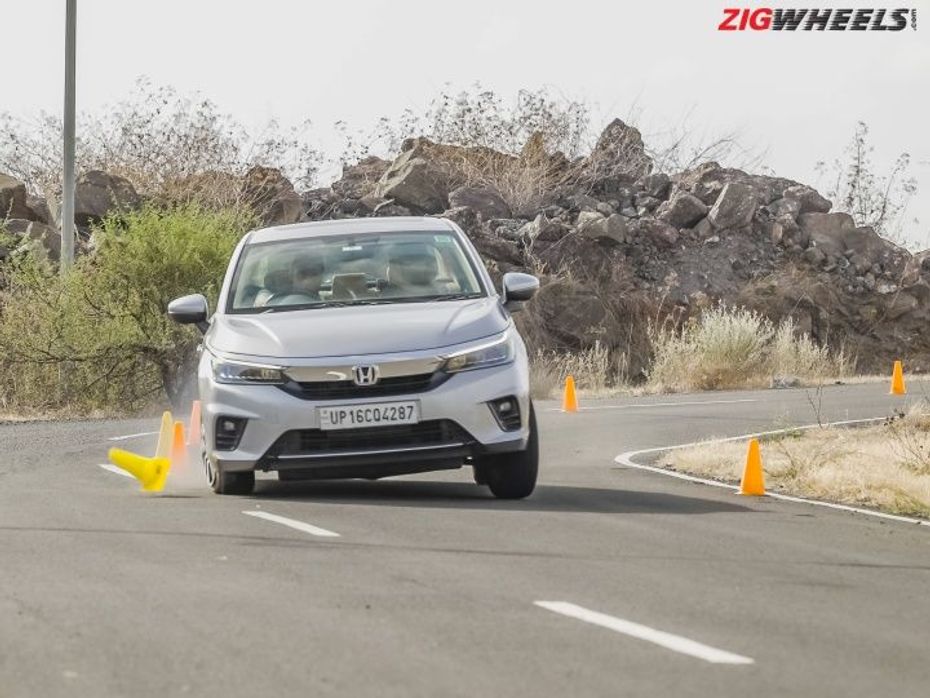
First up was the City, the lightest sedan here. But it still suffered a wash of understeer enough to knock over a cone. Moving on to the Slavia, which also ran wide, in fact wider than the City even, knocking over two cones in the process. The reason it fared worse than its 1-litre TSI counterpart could be because of the brawnier and more importantly heavier engine under the hood which exaggerates the understeer effect that little bit more.
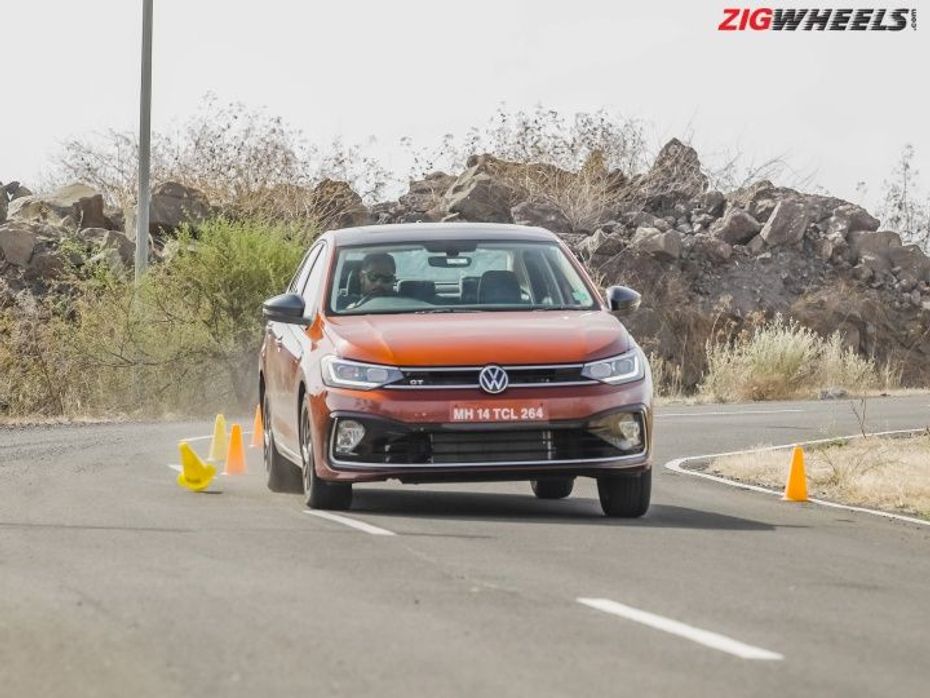
Now finally getting into the Virtus, the sedan interestingly was able to keep a tighter line into the corner and only washed out wide enough to knock down one cone. Compared to the Slavia, the Virtus’ steering feels a lot more quick and direct and it was easier to be precise with the car’s turn inpoint. The Slavia on the other hand feels like it steers slower and it’s harder to get it to keep a tight line. So the final result sees the Slavia in third while it’s a tie between the City and Virtus in tackling corners.

As a bonus we also put the Virtus 1.0-litre TSI AT setup through the cornering test and like the GT Line, it had a pointy steering, which gave a similar result of knocking over one cone at 70kmph.

We add another bit of ‘Zig’ spice here, using our scientific mug test where we fill up a 1000ml mug to the brim and ride our sedans on rougher roads to see how much water still manages to survive the onslaught. Last time out in the Tigor EV vs CNG comparison, I was the ‘wet’ test dummy, and this time it was Alan’s turn to get the ‘splash’ treatment.
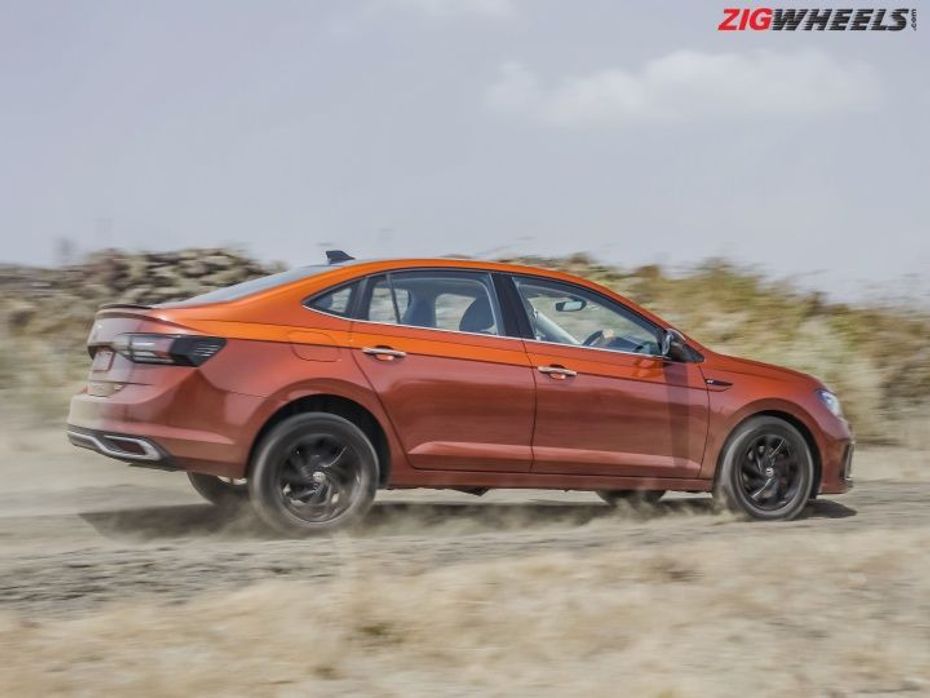
It was a near enough tie between the Honda City and Skoda Slavia, with the former losing 40ml of water and the latter splashing 50ml of water. Interestingly, despite using the same powertrain setup as the Slavia, the Volkswagen Virtus came out on top, losing only 25ml of water, offering a more settled suspension setup over substandard roads compared to its cousin.

Going away from the scientific test and on to the real world, it's a similar story. With the City riding well on city speeds and bumpier terrains, while the Slavia comes into its own on the highway and smoother roads. The Virtus is a more well-rounded machine, leaving us more confident over higher speeds as well as giving a decent enough experience in the city too.
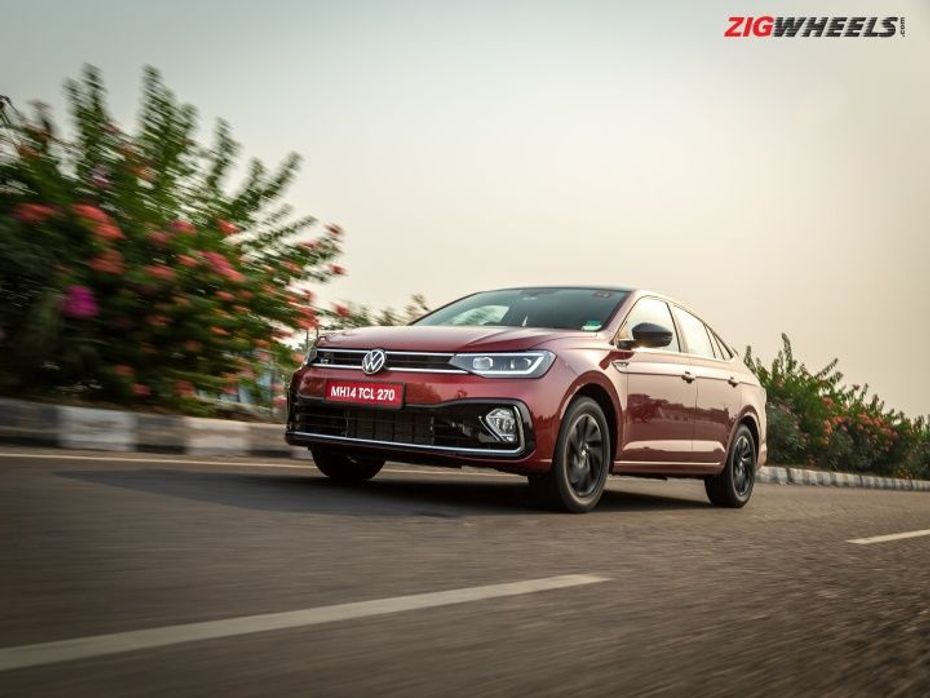
|
Honda City |
Skoda Slavia |
Volkswagen Virtus |
|
|
Prices (ex-showroom) |
Rs 11.46 lakh to Rs 15.21 lakh |
Rs 10.99 lakh to Rs 18.39 lakh |
Rs 11.22 lakh to Rs 17.92 lakh |
Over the four exciting tests we managed to put the three sedans through we had some interesting conclusions. The Volkswagen Virtus manages to come out as the overall winner as it never ranked below second place and gives the best ride of the three.
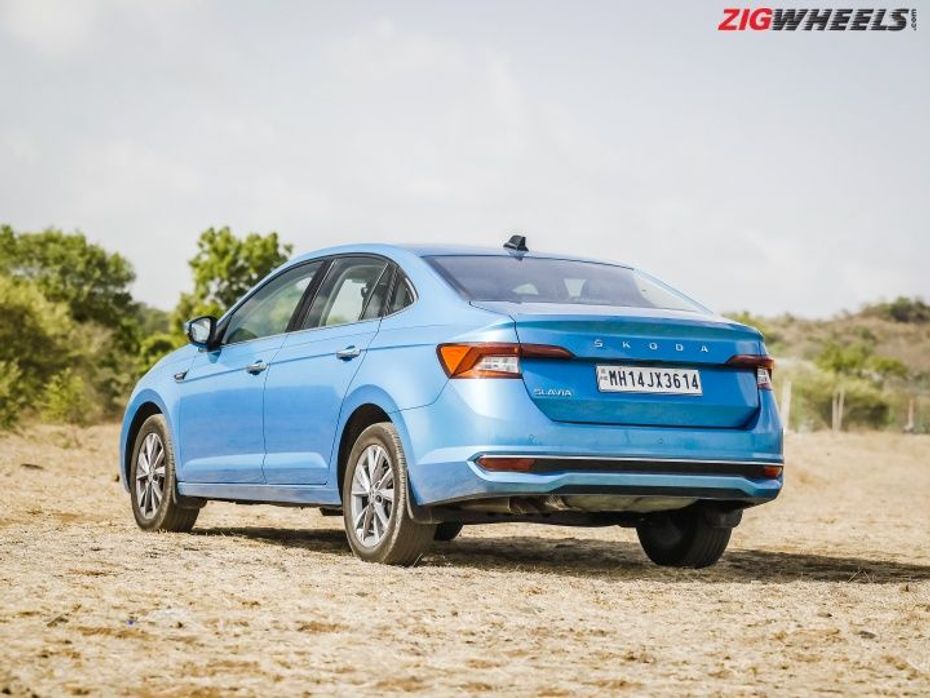
Following closely in second place is the Skoda Slavia, which aced the acceleration and braking runs, but didn’t quite have the ideal ride and handling setup. Sure, the Honda City, ranked third here, fell behind in pure performance, but it does manage to come into its own at city speeds and handles bumpy terrains well.


Volkswagen ID. Aero Will Break Cover In Concept Form On June 27

Honda City First Drive 2023 | Do you love sedans too?

2022 Mahindra Scorpio N First Drive: Perfect Middle Ground?

2024 Honda Amaze Review: Predictable Is Good

2024 Maruti Dzire Review: Playing It Safe
 Volkswagen Taigun
Volkswagen Taigun
 Honda City
Honda City
 Mahindra Scorpio N
Mahindra Scorpio N
 Skoda Slavia
Skoda Slavia
 Honda Amaze
Honda Amaze
India's largest automotive community
 Here Is A List Of SUVs Coming To The Indian Market In 2025
Here Is A List Of SUVs Coming To The Indian Market In 2025
 Check Out The List Of The Top 5 SUVs Showcased At The Auto Expo 2025
Check Out The List Of The Top 5 SUVs Showcased At The Auto Expo 2025
 Auto Expo 2025: Toyota Hilux Black Edition Explained In 10 Images
Auto Expo 2025: Toyota Hilux Black Edition Explained In 10 Images
 India’s Most Affordable Car, The Vayve Eva Is Priced From Rs 3.25 Lakh! Here Is A Look At All Of Its Variants!
India’s Most Affordable Car, The Vayve Eva Is Priced From Rs 3.25 Lakh! Here Is A Look At All Of Its Variants!
 Volkswagen Taigun
Rs. 11.69 Lakh
Volkswagen Taigun
Rs. 11.69 Lakh
 Volkswagen Tiguan
Rs. 38.16 Lakh
Volkswagen Tiguan
Rs. 38.16 Lakh
 Maruti Dzire
Rs. 6.79 Lakh
Maruti Dzire
Rs. 6.79 Lakh
 Hyundai Verna
Rs. 11.07 Lakh
Hyundai Verna
Rs. 11.07 Lakh
 Toyota Camry
Rs. 48.00 Lakh
Toyota Camry
Rs. 48.00 Lakh
 Honda Amaze
Rs. 7.99 Lakh
Honda Amaze
Rs. 7.99 Lakh
 Hyundai Aura
Rs. 6.54 Lakh
Hyundai Aura
Rs. 6.54 Lakh
 Hyundai Creta Electric: Sensible, Not Sensational
Hyundai Creta Electric: Sensible, Not Sensational
 Mahindra XEV 9e First Drive Review
Mahindra XEV 9e First Drive Review
 Mahindra BE 6e First Drive Review: Pure Insanity!
Mahindra BE 6e First Drive Review: Pure Insanity!